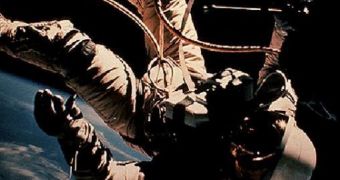Space sickness, or the Space Adaptation Syndrome, is experienced by astronauts while transitioning from a gravitational field to another, such as during space travel. Although it only lasts for the first few days of the space trip, space sickness can also affect experienced astronauts even after a long period of time. According to statistics, almost half of all the astronauts who flew into space felt the effects of space sickness.
Usually, adapting from one gravitational field to another takes time. Because gravity is a major component in spatial orientation during everyday life, the adaptation process is not completed during the transition from an environment with a powerful gravitational pull to weightlessness, which makes people experience nausea, visual hallucinations and disorientation.
The paper written by researcher Suzanne Nooij, PhD at TU Delft, shows that the same effect can be obtained by applying high gravitational forces for a long period of time, such as in the case of fighter pilots training inside human centrifuges. Although the rotation has no visible effect, people subjected to gravitational forces three times greater than that of Earth for as long as one hour often complain of symptoms similar to those of space sickness.
Therefore, the sickness is not triggered by the change in gravitational force, but simply by an inability to adapt to that change. The results of the study carried out by Nooij at the human centrifuge Center for Man and Aviation in Soesterberg seem to confirm the theory that both space sickness and centrifuge sickness are generated through the same mechanism.
The human organ that controls balance, located in the inner ear, consists of two semi-circular canals sensitive to rotation and otoliths, which are able to detect linear acceleration. Researchers previously believed that an imbalance between the left and the right otoliths causes space sickness. However, Nooij found that in the case of people manifesting space sickness symptoms following a long period of rotation inside the human centrifuge have both high otolith asymmetries and more sensitive otolith and canal systems than people without space sickness.
Therefore, space sickness cannot be blamed on otolith unbalances alone, but on a combination of asymmetries in the otolith and canal systems, which goes to show that the balance organ works as a whole, and not through individual interactions between the parts of the organ.

 14 DAY TRIAL //
14 DAY TRIAL //